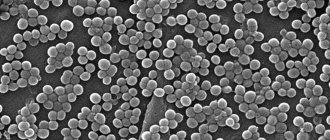Timely diagnosis of diseases is the key to effective treatment. All diseases in dogs can be divided into several types. Among them are internal non-contagious diseases of organs and systems caused by impaired metabolic processes. Surgical diseases include skin diseases, diseases of the gastrointestinal tract, and inflammatory processes of tissues. Obstetric and gynecological diseases occur in females, and andrological diseases affect males. Invasive ones are provoked by various parasites. Protozoans arise from unicellular parasitic organisms (pyroplasmosis, toxoplasmosis). Dogs are also affected by infectious and viral (plague and rabies) diseases. We will cover these and other dog diseases in this article.
Dog diseases
Main signs of poor health
Veterinarians say that signs of unhealthy dogs are combined with normal behavior. The pet, always active, becomes lethargic and refuses to eat. When diseases of the internal organs are present, the dog may take an unusual position.
You can determine your health by your nose. The normal condition is if it is wet. When you feel bad, it will be warm and dry. Tucked paws and drowsiness indicate health problems.
A visual inspection of a dog's fur will provide detailed information about the dog's well-being. The presence of wounds, redness and swelling indicate that the dog is in poor physical condition.
The first sign of illness is refusal to eat
You can tell that your pet is facing health problems by difficulty breathing, loss of consciousness, and watery discharge from the nose. When a dog becomes ill, its body temperature may rise significantly and vomit.
At the first sign of illness in your pet, you should contact a veterinary clinic.
Diseases transmitted to humans from dogs
Many people keep pets. Dogs have been kept by humans for more than 14 centuries. Many studies confirm the fact that having pets has a beneficial effect on a person’s mental state. However, there are a number of infectious diseases that a dog owner may be susceptible to. The disease is transmitted even with minimal contact, through saliva, urine, and feces.
Diseases that can be transmitted to humans from dogs include:
- tuberculosis;
- rabies;
- leptospirosis;
- toxoplasmosis;
- helminth infections;
- chlamydia;
- lichen;
- acute echinococcosis.
If you find signs of disease in your dog, you must immediately contact a veterinarian to identify the disease and begin treatment. If the doctor confirms the presence of a disease that can be transmitted to humans, then it is necessary to take tests for everyone who came into contact with the animal.
Symptoms of common canine diseases
Mostly, pets are affected by ailments that require immediate response. They are quite difficult to treat. Dogs can experience health problems due to various diseases. They are caused by all kinds of viruses. At the first signs, you should contact a veterinary clinic, where a specialist will help avoid complications by establishing the cause of the disease and indicating treatment.
In the case of plague, the virus has the ability to quickly spread throughout the body. The symptoms of the disease are as follows:
- The pet is suffering from fever.
- Inflammation of the central nervous system, respiratory and digestive organs is noted.
- The dog refuses to eat.
- The temperature rises significantly.
- Convulsions occur.
- A cough reflex appears.
The distemper virus has the ability to quickly spread throughout the body
Parvovirus causes enteritis. This virus can cause acute inflammation of the stomach. The dog suffers:
- lack of appetite;
- stomach cramps;
- vomiting.
Ticks are the cause of piroplasmosis. The following symptoms are observed with this disease:
- The mucous membrane becomes yellow.
- Breathing quickens.
- Weakness when moving, unsteady gait.
- General malaise, apathy.
Invasive diseases of dogs
These diseases are considered contagious because they are caused by pathogens that are animal organisms (insects and protozoa). Veterinarians call passive sources of infection the primary sources of infection; they enter through the ingestion of food and water. Contact path through touching a sick animal and care items.
The process of infecting a dog with worms
A group of diseases such as helminthiasis is almost universally widespread. All helminths living in the animal’s body are divided into cestodes, nematodes, and trematodes. Cestodes belong to flat, tapeworms, the length of which can reach from 10 m to 10 cm. Nematodes belong to round parasites (up to 8 m). Their prominent representatives are roundworms and trichinella. Nematodes have suckers and a flat body shape.
Important! Small individuals, only a few mm, can live in the intestines of dogs. Laboratory analysis of feces is required to identify worm eggs.
Symptoms of infection are as follows:
- Bloating.
- Strange changes in taste preferences (the dog eats earth, stones, sand).
- The wool dries and becomes dull.
- A cough appears.
- The dog rides on its butt.
Among the diseases, trematodes, which are parasitic worms, predominate.
Reference! Opisthorchiasis develops due to the presence of liver fluke. It affects the liver and pancreatic ducts.
Symptoms of diseases:
- there is an increase in the abdomen;
- pain in the liver area;
- occasionally vomiting.
Diseases can be cured in a timely manner only by immediately contacting a specialized specialist. Preventive measures using the medications “Kaniquantel plus” or “Pratel” will help avoid the appearance of worms. When your dog takes medications, you should select the correct dosage. They are given along with a small portion of food.
As a result of infection with parasites, the immune system is weakened, which leads to dangerous infections. A large number of them leads to the formation of dense lumps, which can lead to tissue rupture. Small pets grow slowly and suffer from rickets.
Preparations for the treatment of worms in dogs
Infectious diseases of dogs
In nurseries, animals are affected by infectious tracheobronchitis. Dogs become infected through airborne droplets. Manifestations of the disease are:
- violation of general condition;
- cough reflex;
- lethargy and loss of appetite.
Tracheobronchitis is transmitted by air from one individual to another
Pets can become infected with parvovirus enteritis by eating food that contains hair from dogs that are recovering. The initial stage of the disease can be recognized by several signs (weakness and excessive dehydration).
Rabies is a dangerous disease. Infection occurs directly through saliva. Symptoms:
- paralysis and loss of coordination of movements;
- white foam at the corners of the mouth;
- convulsive twitching of the body.
Leptospirosis is common in all countries. A person can become infected with this disease through the urine of a sick animal. When sick, the dog experiences problems with blood flow and vision. The pet suffers from shortness of breath and nervous system disorder.
Video - 5 most dangerous dog diseases
Prevention of infections: vaccination
The veterinarian selects the optimal vaccination plan for your pet. Basically they adhere to this scheme.
- At 4-6 weeks against canine distemper and parvovirus enteritis.
- In the eighth to ninth week, vaccination against adenovirus infection, parainfluenza, and leptospirosis is added to the same indicators.
- Upon reaching 12 weeks, and then annually, revaccination is carried out, and a rabies vaccination is mandatory.
Dog vaccination scheme
Diseases of the respiratory system of dogs
Diseases of the respiratory system are considered common, accounting for 35% of the total number of all ailments. Their symptoms are as follows:
- A sick dog may have shortness of breath.
- There is difficulty breathing.
- Nasal discharge.
Rhinitis is characterized by inflammatory processes in the mucous membrane of the four-legged friend. Laryngitis is accompanied by inflammation of the laryngeal mucosa. Bronchitis is manifested by inflammation in the submucous membrane of the bronchi and is manifested by a hacking cough from the pet.
Diseases of the respiratory system are considered one of the most common
Parasitic diseases
Parasitic diseases in dogs are divided depending on their habitat into:
- external (leeches, blood-sucking);
- skin (itchy itching);
- cavity;
- internal;
- living in the blood and intestines.
Diseases caused by external parasites
Demodectic, follicular (“red”) scabies is a common skin disease. It is difficult to cure, the course of the disease is slow, up to 2 years or more. Young short-haired dogs are mainly susceptible. Scabies mites live in their hair follicles and skin glands.
The symptoms of the disease are as follows:
- Severe attacks of itching.
- Formation of a hard crust on the dog’s extremely irritated skin.
- Weight loss.
- Enlarged lymph nodes.
- Hair loss.
The most common skin diseases are leishmaniasis, diseases caused by bacterial infections, allergic dermatitis, and ringworm (microsporia). Young individuals and pets with weakened immune systems are more susceptible to infection. If you notice symptoms, you should immediately take your dog to a veterinarian for treatment.
The main symptoms of a sick and healthy dog
Important! In case of parasitic infections, owners are advised to stop petting their pet, prohibit any contact with children, and strictly adhere to the rules of personal hygiene.
Blood parasitic diseases of dogs
Piroplasmosis is focal in nature. Caused by protozoan microorganisms (babesia) when bitten by ticks. Small rodents can be carriers. The disease manifests itself with the following symptoms:
- lethargy of the animal;
- increased temperature;
- cloudy urine;
- bouts of vomiting.
Important! If a tick is found on the skin, then the dog’s well-being must be monitored for 7-14 days. If you notice the above symptoms, contact your veterinarian immediately.
Spread of piroplasmosis
To avoid infection, you should adhere to preventive measures:
- Destroy insects that live near the dog’s location.
- Constantly monitor the condition of the bathroom.
- After a walk, carefully examine the animal’s skin.
- Keep bedding clean. If possible, pour boiling water over it periodically.
- To eliminate ticks, fleas, and lice eaters, it is recommended to use an aqueous solution of Stomazan.
Video - Skin diseases in dogs and cats
Digestive tract diseases
This type includes gastrointestinal diseases. It is sometimes difficult to diagnose the disease on your own. For example, constipation can be caused by poor diet, insufficient fluid retention in the intestines, and mechanical obstructions. Therefore, specialist advice is required.
They are worried about the symptoms of gastritis and gastroenteritis. Inflammation has the ability to spread to the entire intestine. The causes of the disease are low-quality products (spoiled meat and dairy products).
These diseases manifest themselves against the background of parvovirus enteritis, colibacillosis and mycosis. They can be the result of non-communicable diseases. These include stomatitis, mumps and peritonitis.
To establish an accurate diagnosis, you must consult a veterinarian
Symptoms of the disease are:
- lethargy and weakness;
- there is an increase in temperature;
- the pet refuses to eat.
Intestinal obstruction requires immediate contact with a veterinary clinic for help. Hemorrhoids, depending on their origin, are divided into internal and external. Occurs as a result of abundant indigestible food and insufficient walks.
External hemorrhoids in a dog
Symptoms of hemorrhoids:
- stool changes consistency and becomes drier;
- the anus is swollen;
- blood clots are visible in the stool;
- the dog changes its gait and becomes less active.
We talked about helminthiases as one of the types of gastrointestinal tract diseases above.
Rectal diseases
Rectal injuries can occur in young dogs that ingest sharp pieces of long bones. They need to be removed from the organ. Rectal prolapse occurs in puppies due to prolonged diarrhea or constipation. Symptoms of the disease:
- Lethargy and apathy of the pet.
- Painful sensations in the anus.
- Inflammation of the anus, the appearance of mucus or blood in the stool.
Fresh cases are successfully treated with bowel reduction. In advanced conditions, a positive outcome is doubtful. For neoplasms (carcinoma), only surgical intervention is recommended.
Ear diseases
Pet owners have to deal with ear diseases. Manifestations of such problems are the dog frequently scratching its ears with its paw or the appearance of discharge from them. Inflammation of the middle ear results from the penetration of infection from the outer ear into the eardrum.
Obvious symptoms:
- The dog has difficulty opening its mouth, which leads to loss of appetite.
- Otodectosis causes pain.
- Subsequently, the disease is accompanied by the discharge of serous exudate from the ears.
- External irritants such as dust particles and pollen can cause ear eczema. The dog constantly scratches and shakes his ear.
- The inside of the ear is red and swollen.
- Unpleasant odor from the ears.
Frequent scratching of a dog's ears with its paw is a sign of ear disease.
Recently, veterinarians have had to diagnose tumors in the ear canals. They affect dogs over five years of age.
Eye diseases
They can be of infectious, non-infectious origin (mechanical damage, eversion of the eyelids) and congenital, associated with damage to the eyes and lens. These include distichiasis (hairs on the free edge of the eyelid). Trichiasis causes hair to get into the eye. Manifests itself in regular blinking and lacrimation. With injuries and local infection, allergies, blepharitis . This is the most common lesion seen today. Its symptoms are:
- Red, swollen eyelid.
- The dog blinks frequently and rubs and scratches the eyelid.
- Purulent discharge appears.
- Eye pigmentation is lost.
Entropion of the third eyelid in a dog
Diseases of the eyeball include exophthalmos, which manifests itself as protrusion of the eye. The animal may suffer from retraction of the eyeball, convergent strabismus, conjunctivitis, and disruption of the lacrimal apparatus.
Diseases of the musculoskeletal system
Joints with arthrosis
These diseases lead to serious consequences, expressed in damage to the spine and joints of the paws as a result of inflammatory and degenerative processes in the tissues. They can be congenital or acquired. The most common are arthrosis, damage to the intervertebral discs, and hip dysplasia.
Prevention of diseases in dogs
Vaccination is the main preventive measure. This method can protect the pet and owner from most contagious and deadly diseases.
Veterinarians also recommend periodic deworming and treatment for parasites, namely fleas and ticks.
ATTENTION! The dog must follow a strict but balanced diet.
Any dog illness is difficult to bear not only for the pet, but also for the owner. Anxiety and excitement accompany the owner until recovery. If any suspicious condition is detected in a dog, it is better to contact a veterinarian to prescribe timely and correct treatment. Modern medicine makes it possible, if not to cure, then to alleviate even the most complex diseases.
Internal non-communicable diseases
Respiratory system diseases
- Bronchitis
- Bronchopneumonia
- Laryngitis
- Pleurisy
- Rhinitis
- Pharyngitis
Diseases of the urinary system
- Bladder spasm
- Urocystitis
Nervous system diseases
- Eclampsia
- Epilepsy
Digestive system diseases
- Ascites
- Esophageal blockage
- Acute catarrhal gastritis
- Parenchymal hepatitis
- Peritonitis
- Stomatitis
- Chronic catarrhal gastritis
- Stomach ulcer
Diseases of the cardiovascular system
- Arteriosclerosis
- Myocarditis
- Endocarditis
Metabolic disease
- Obesity
- Diabetes
Infectious diseases
general characteristics
What these diseases have in common is that they are caused by microorganisms and are usually contagious. Each infectious disease has a clear pattern of progression, since their occurrence and spread depend on the stage of the pathogen’s life cycle. Weak animals, puppies, and old dogs are more susceptible to such diseases. However, after the disease, post-infectious immunity appears: the dog that has recovered from the disease becomes immune to the pathogen for a long time. If such a disease is detected, the animal should be isolated from other dogs, and the room where it was kept should be disinfected.
The disease consists of four main stages:
- Incubation (hidden);
- Preclinical;
- Clinical (right now the signs of the disease manifest themselves in the most significant way);
- Outcome of the disease (full or partial recovery, death).
Viral
The most common infectious diseases characteristic of dogs are viral.
Rabies. Infection occurs through contact with the saliva of a sick animal through a bite. The virus, which enters the body through saliva, penetrates the dog’s spinal cord and then the brain, where it actively multiplies and causes inflammation. Knowledge of the following symptoms will help to recognize this disease: changes in behavior (the animal becomes capricious and unapproachable or, conversely, excessively petting). Often the dog begins to actively chew the bite site, becomes very agitated, loses appetite, vomits, and produces saliva. These are early signs of the disease.
At the next stage the dog becomes aggressive , can attack a person, even the owner, tries to run away, vomiting and salivation continue. Subsequently, the animal exhibits convulsive seizures, the frequency and duration of which increases as the disease develops, and muscle paralysis (primarily the larynx and pharynx). Body temperature rises.
If rabies occurs in a silent form, then you should pay attention to the depressed appearance and lethargy of a previously active animal. It is very difficult to recognize this form due to the absence of characteristic symptoms.
Plague. Infection occurs through contact with a sick animal or through infected external objects (water, feed). The main signs are: fever, lack of appetite, lethargy of the animal, desire for privacy, fever, inflammation of the mucous membranes, purulent discharge from the eyes and nose. The skin of the nose becomes dry and cracked, causing discomfort to the dog, causing the animal to scratch its nose and sneeze. Difficulty breathing is also typical, and there may be diarrhea and vomiting.
Aujeszky's disease, also known as “false rabies ,” can be recognized by signs: decreased appetite, fearfulness, excessive salivation. Next, severe itching of the muzzle appears, causing the animal to lose control of itself and begin to itch, tearing off the skin until it bleeds.
Dog disease
Other diseases. The owner of the animal should closely monitor the condition of his pet in order to recognize the viral disease in time by the following signs:
- Lethargy, apathy;
- Decreased appetite, refusal to feed;
- Vomit;
- Temperature increase;
- Purulent discharge from the eyes, nose;
- Difficulty breathing, sneezing.
If you notice at least two or three of these signs, you should immediately contact a veterinarian . Treatment can only be prescribed by a specialist based on examination of the animal. As a rule, the dog is given an injection of serum with antibodies to help the body fight the infection, and antibiotics are prescribed.
Bacterial:
- Tuberculosis;
- Borreliosis;
- Listeriosis;
- Brucellosis
The following signs will help you recognize a bacterial disease at an early stage:
- General depression;
- Refusal to eat;
- Fever;
- Vomiting, diarrhea, foam at the mouth.
By contacting the clinic, you can help your animal receive timely treatment.











